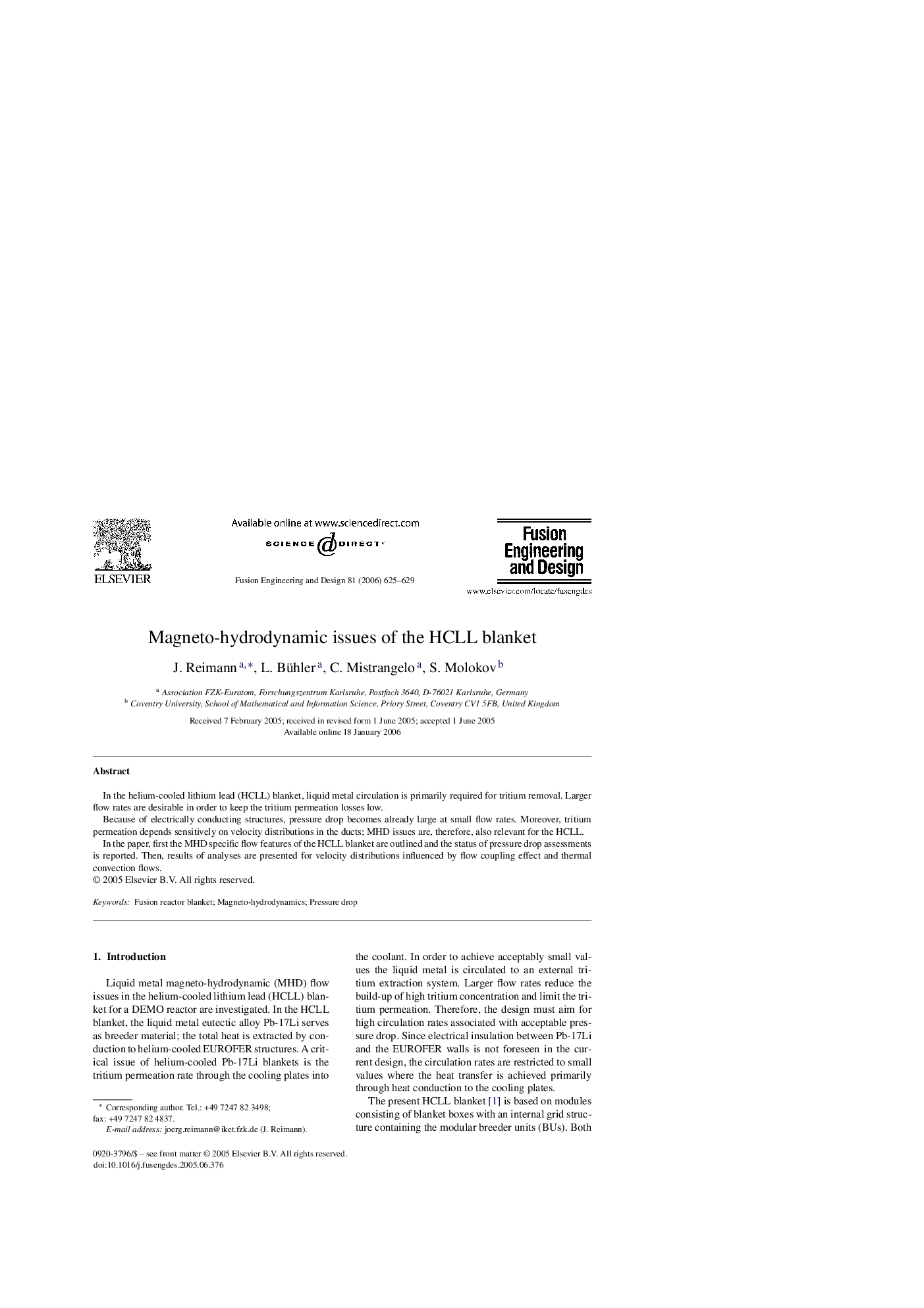| Article ID | Journal | Published Year | Pages | File Type |
|---|---|---|---|---|
| 273511 | Fusion Engineering and Design | 2006 | 5 Pages |
Abstract
In the helium-cooled lithium lead (HCLL) blanket, liquid metal circulation is primarily required for tritium removal. Larger flow rates are desirable in order to keep the tritium permeation losses low.Because of electrically conducting structures, pressure drop becomes already large at small flow rates. Moreover, tritium permeation depends sensitively on velocity distributions in the ducts; MHD issues are, therefore, also relevant for the HCLL.In the paper, first the MHD specific flow features of the HCLL blanket are outlined and the status of pressure drop assessments is reported. Then, results of analyses are presented for velocity distributions influenced by flow coupling effect and thermal convection flows.
Related Topics
Physical Sciences and Engineering
Energy
Energy Engineering and Power Technology
Authors
J. Reimann, L. Bühler, C. Mistrangelo, S. Molokov,
